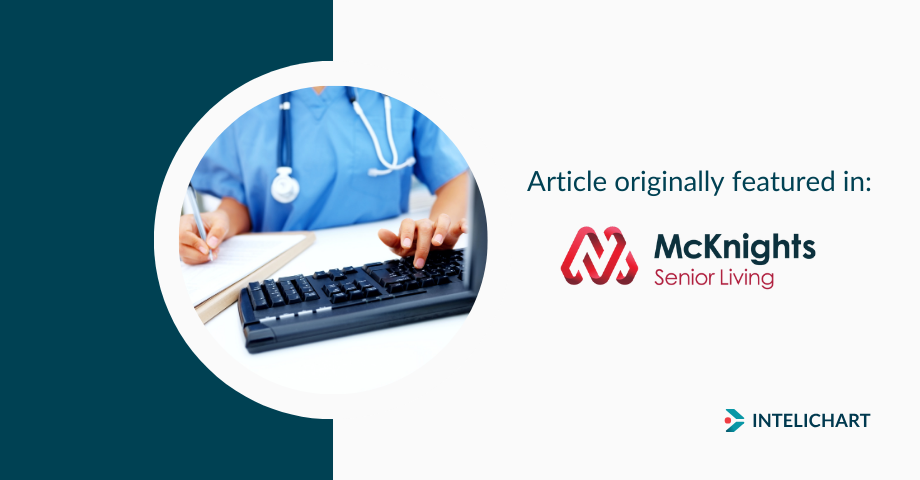
Senior living communities play a pivotal role in offering care and support to the aging population. With older adults being one of the fastest-growing demographic groups in the country, an escalating demand exists for such services and care. In fact, it is estimated that the number of older adults transitioning to long-term care settings will increase 50% by the year 2030.
Senior living communities, however, often are faced with staffing shortages, making it difficult to meet this growing demand. Among healthcare-related sectors, long-term care facilities have been the hardest hit in terms of staffing during the pandemic, according to industry advocates.
Staffing challenges are further exacerbated by the nature of the work in senior living communities. Providing services and care for older adults often requires around-the-clock attention and a diverse range of services, including personal care, medical care and emotional support. This reality demands a highly skilled and dedicated workforce, but the industry struggles to attract and retain qualified professionals, leading to understaffing and overworked employees.
Inefficient communication an overlooked source of burnout
One of the less-discussed challenges contributing to staff burnout is the inefficient communication methods used within senior living communities. Traditional modes of communication, such as phone calls and paper notes, are time-consuming and cause workflow disruptions, further adding to the stress and workload that has left the long-term care industry in a state of crisis.
For most senior living communities, answering a family member’s questions specific to a resident’s care or well-being can be a haphazard process dependent on work shifts, staff availability and front desk access to information about individual residents.
When communities get a call from family, front desk staff members must interrupt their other tasks to track down the information or find someone who knows the answer, creating additional labor and potentially delaying responses, which easily can create a vicious cycle where family members and staff members wind up exchanging voicemails in an endless game of phone tag that frustrates both parties.
Additionally, paper-based communication methods are prone to errors and delays. Important messages can get lost in the shuffle of paperwork, and staff members may struggle to keep track of critical information, leading to potential lapses in services and care.
Personal device usage puts operators at risk
In the absence of an efficient communication platform, it’s not uncommon for staff members to resort to using their personal devices to communicate with residents’ family members. Although doing so may seem like a formidable solution, it comes with its own set of challenges. Staff members using their personal devices for communication can receive calls or texts at all hours of the day, further exacerbating burnout and affecting work life-personal life balance.
Moreover, engaging in communication with family members outside of a community’s internal systems introduces significant quality control issues. Without the centralization of messaging across the entire enterprise, important details can be lost or overlooked, leading to potential errors in care and service plans or miscommunication of critical information. This lack of standardized communication jeopardizes the overall quality of care and compromises resident safety.
Another consideration is compliance with regulations and privacy standards, such as the Health Insurance Portability and Accountability Act. Personal devices typically are not equipped with the necessary security measures to safeguard sensitive medical information, creating potential breaches in patient confidentiality requirements.
Solve communication challenges and combat burnout with technology
By embracing innovative communication technologies, senior living communities and skilled nursing facilities can revolutionize interactions between staff members and families, ensuring swift and unified information-sharing.
One of the key benefits of adopting better communication technology is the ability to provide real-time updates to family members. With secure messaging apps and online portals, families can receive instant notifications about their loved one’s well-being, eliminating the need for phone tag and fostering a sense of transparency and trust.
Purpose-built platforms with features such as broadcast messaging serve as the modern-day megaphone, enabling staff members to effortlessly share essential updates with both the care team and family members simultaneously. This functionality ensures everyone stays on the same page and receives timely information in a fraction of the time previously required.
Group family messaging further strengthens this bond by creating secure, digital chatrooms where caregivers, healthcare professionals and family members can communicate in real time. It’s a game-changer that reduces the need for endless phone calls and emails while keeping discussions neat and organized.
24/7 information access builds transparency and avoids phone calls
Communication platforms that integrate with electronic health records systems can offer a new level of family engagement by allowing 24/7 access to a resident’s health information, such as access via a patient portal. Designated family members can check up on their loved one’s well-being without the hassle of contacting staff for routine inquiries, promoting transparency and putting families at ease.
This wave of technology is not just breaking down communication barriers; it’s building bridges of trust and collaboration in the long-term care community while ensuring all communication and data are securely stored within an operator’s network. This situation not only promotes resident privacy; it also streamlines documentation, making it easier for staff members to access and update resident information.
By embracing modern communication platforms and integrating them with EHR systems, senior living and skilled nursing providers can create a more efficient, secure and transparent environment. This environment not only benefits staff members by reducing burnout and improving workflows; it also enhances the overall quality of care and the experience for residents and their families. As the aging population continues to grow, it is imperative that long-term care operators embrace these technologic advancements to meet the evolving needs of their residents and staff members alike.
This article was originally published on McKnights Senior Living on December 7, 2023. You can view the article here.